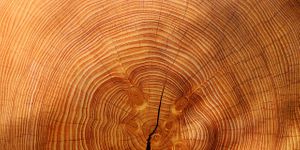Trees Space Themselves Out to Maximize Biodiversity
A recent study published in Science found that adult trees in tropical forests are subject to forces resulting in greater distancing between adults of the same species than would otherwise naturally occur.
There is a high diversity of tree species in tropical forests, often with hundreds of tree species in a square mile. To accommodate this diversity, adult trees of the same species must be sufficiently spaced from each other. The authors of the study found that adult trees were, in fact, three times as distant from each other than the distance that seeds would typically travel.
The researchers studied a forest research plot on Barro Colorado Island in the Panama Canal. The plot has been the subject of data collection for the past 100 years, enabling the researchers to identify patterns and deviations from normal seed behavior.
"Due to an abundance of available data on this particular forest, we knew the exact location of every tree and also how far seeds travel," lead author Michael Kalyuzhny said. "We were able to ask: How should the forest look if trees just established where the seeds fell? With our computational models, it turned out that the real forest does not look like this at all -- the real trees are much more far apart."
This behavior benefits the individual trees and the conspecifics (members of the same species), as well as making room for more biodiversity in the forest at large. The scientists used computational models to determine that each tree species is much more negatively affected by conspecifics than by trees of other species.
They theorize that closely-spaced conspecifics are subject to pathogens and insects that prey on that specific species. This mechanism ensures that enemies effectively “make room” for other species to grow around each tree.
"Trees are the engineers that provide resources for the entire ecosystem, and since most of the species in the world reside in the tropics, we must better understand what maintains the biodiversity of planet Earth," Kalyuzhny said.
"This is a steppingstone to understanding the dynamics of things like carbon storage that matter in relation to climate change," study author Ostling said. "It's such a fundamental question that, even if the applications are not yet known, there's still a lot to learn, and this is one ingredient in understanding.”
Sources: Science; ScienceDaily








